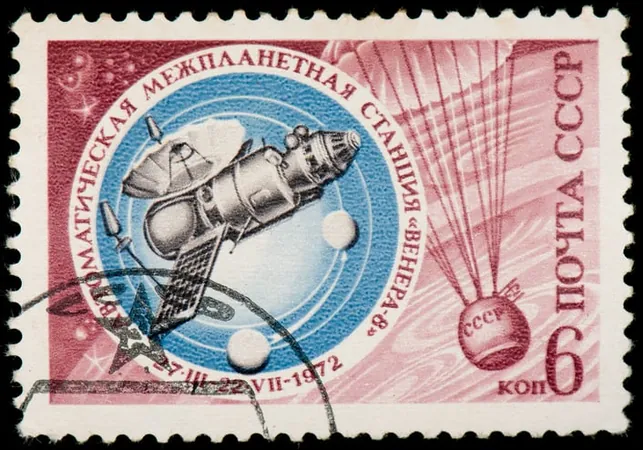
After 50 Years in Space, Soviet Venus Probe Set for Earth Return!
2025-05-08
Author: Siti
A Legendary Journey Comes to an End
A Cold War-era spacecraft, lost for half a century, is on a remarkable path back to Earth. The Soviet Union launched the ambitious Venera mission in 1972 to explore Venus, famously known as Earth’s hellish twin due to its extreme heat and incredible atmospheric pressure.
A Quest for Venus Gone Awry
Launched from Kazakhstan on March 31, 1972, the Venera probe experienced an engine failure, thwarting its intended mission to land on the scorching surface of Venus. Instead, the uncrewed craft became stranded in orbit, adrift in the cosmos.
Return to Earth: An Uncertain Descent
Fast forward 53 years, and the probe—now named Kosmos 482— is expected to re-enter Earth's atmosphere any day now, although it's unlikely to fulfill its original mission of reaching Venus. Experts suspect its descent could occur between May 9 and 11, but pinpointing an exact location or time remains a challenge.
Gravity Wins: A Cautious Outlook
Currently, Kosmos 482 orbits Earth in an oval trajectory, gradually losing speed and altitude due to atmospheric drag. "Gravity is winning this space race," commented NASA specialists, emphasizing that the chance of the spacecraft hitting a person is almost negligible.
Navigating the Risks of Reintegration
Weighing over 1,000 pounds and measuring around three feet wide, this relic of the Cold War represents a unique risk compared to typical satellite debris. Although it's more likely to plunge into the ocean—covering two-thirds of our planet—there remains a slim chance it could re-enter over populated areas.
Could It Survive the Flames?
Despite the uncertainties, Kosmos 482 may withstand its fiery descent better than expected. Built to endure Venus's extreme conditions, the spacecraft is effectively armored, akin to a submarine. Its robust design could enable it to greet the oceans intact, although the chances of anyone retrieving it are slim.
The Quest for Discovery Remains Uncertain
Tracking the probe's re-entry is complicated by various factors, including atmospheric ripples and solar storms. Sometimes, solar energy bursts alter the atmosphere's density, affecting the orbiting object's speed.
As astrophysicist Jonathan McDowell notes, if Kosmos 482 falls into the ocean, it will sink to the depths, never to be found—an end to its storied journey that began in the early days of space exploration. The remnants of the Soviet space program will soon fade into the abyss, leaving behind only tales of its audacious ambitions.




 Brasil (PT)
Brasil (PT)
 Canada (EN)
Canada (EN)
 Chile (ES)
Chile (ES)
 Česko (CS)
Česko (CS)
 대한민국 (KO)
대한민국 (KO)
 España (ES)
España (ES)
 France (FR)
France (FR)
 Hong Kong (EN)
Hong Kong (EN)
 Italia (IT)
Italia (IT)
 日本 (JA)
日本 (JA)
 Magyarország (HU)
Magyarország (HU)
 Norge (NO)
Norge (NO)
 Polska (PL)
Polska (PL)
 Schweiz (DE)
Schweiz (DE)
 Singapore (EN)
Singapore (EN)
 Sverige (SV)
Sverige (SV)
 Suomi (FI)
Suomi (FI)
 Türkiye (TR)
Türkiye (TR)
 الإمارات العربية المتحدة (AR)
الإمارات العربية المتحدة (AR)